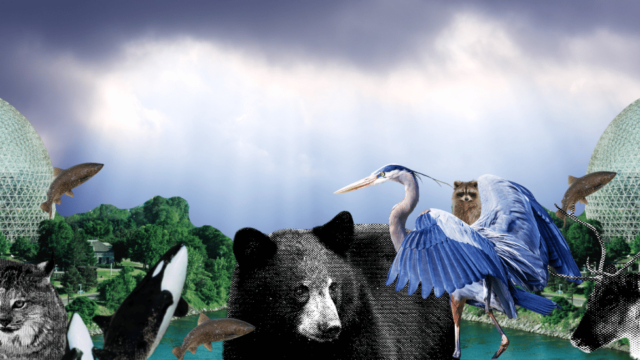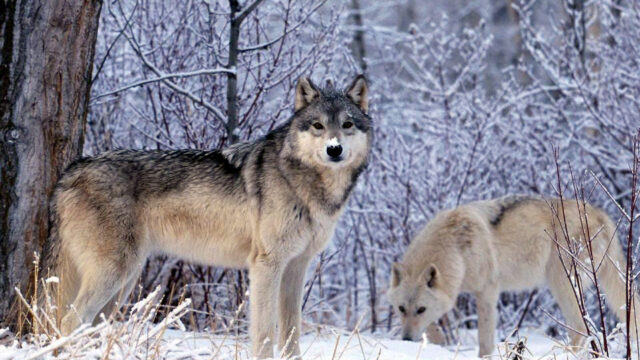In an era punctuated by rising temperatures and increases in extreme weather events, we all know that climate change is a profound threat to life on Earth. But equally devastating to people and planet is the unfolding biodiversity crisis — around the world, numbers and variety of plants, animals and other organisms are plummeting.
To avoid the worst impacts of climate change, science tells us we must limit global warming to 1.5 degrees Celsius and achieve universal net-zero carbon emissions no later than 2050. [1] Post 2050, the world needs to then rapidly move into net negative emissions, particularly after several decades of 1.5°C overshoot. At the same time, recent research revealed that the number of species at risk around the world reached 2 million, which is double previous estimates. [2]
That makes this decade perhaps the most crucial decade for action on the climate and biodiversity crises. Meeting this complex challenge requires integrated action on biodiversity loss and climate change. Indigenous communities are at the frontlines of both the climate and biodiversity crises and must have a critical role in developing the interlocking solutions, as settler-based policies and laws have been insufficient in meeting this global challenge. [3]
How climate change affects biodiversity loss
In a human-dominated world, nature is already fighting to hold on. The largest driver of biodiversity loss remains how people use, or misuse, the land and sea. But climate change is playing an ever-growing role in the decline of species worldwide. Research suggests climate change could become the largest driver of biodiversity loss by the second half of the century. [4]
As temperatures rise and extreme weather events become more common, climate change is altering marine, terrestrial and freshwater ecosystems around the world. Because these changes are happening so quickly, species can have a difficult time adapting to their environments, increasing their likelihood of extinction. [5]
Fossil fuels, the primary driver of climate change, also pose a major threat to biodiversity — both directly through the destruction of ecosystems when fossil fuels are extracted and indirectly by driving climate change. [6] These impacts are only exacerbated by other humanmade pressures like pollution, over-exploitation, invasive species, habitat fragmentation, degradation, and loss.
Biodiversity loss accelerates climate change
Just as climate change alters ecosystems and threatens species, loss of biodiversity contributes to climate change and intensifies its effects. Peatlands, wetlands, soil, forests and oceans play a crucial role in regulating the climate by absorbing and storing carbon. As healthy ecosystems continue to erode, the less nature is able to help us mitigate against climate change. A recent study, for example, demonstrated that forests in Canada have already reached their tipping point and turned from carbon sinks into carbon emitters.
Intact, functioning ecosystems are critical to a climate safe future, but as ecosystem degradation and biodiversity loss increase, these same systems lose their capacity to act as effective carbon sinks and simultaneously become more susceptible to the devastating impacts of climate change. [7]
Healthy ecosystems are key to tackling climate change and biodiversity loss
The relationship between climate change and biodiversity loss creates what is called a positive feedback loop or, in this case, a vicious circle. While the driving causes of these crises are interrelated, the good news is, so are the solutions. Though an equitable phaseout of fossil fuels remains the first line of defense against an unlivable future, restoring abundance in nature and biodiversity is crucial to the fight for a world where people can live in both safety and dignity within planetary boundaries.
Healthy ecosystems store carbon and provide natural defences against floods, storms, and other disasters. However, it is critical to remember that, while nature is our best ally in the fight against climate change, its capacity is limited. Better protection, management and restoration of healthy ecosystems can therefore play a significant role in helping us mitigate and adapt to climate change.
We need laws that address climate change and biodiversity loss together
To date, in both law and policy, biodiversity loss and climate change have often been tackled as non-congruent issues. But neither is occurring in isolation — and neither can be successfully resolved unless they’re both tackled together.
Addressing the interconnection between these two crises provides a key opportunity to literally and figuratively take an ecosystems approach to meeting international targets towards responsible stewardship of our shared planet.
One year ago, Canada hosted the UN Biodiversity Conference (COP15) in Montreal which ended with the landmark Kunming-Montreal Global Biodiversity Framework (GBF). [8] The deal, backed by 196 countries, is a once-in-a-lifetime opportunity to restore nature. It includes a commitment to protect 30 per cent of lands and oceans by 2030. The success or failure of the deal’s implementation will directly translate to whether we meet the ambitious climate targets set out in the Paris Agreement.
How a new nature accountability law can help
At COP28, the United Nations Climate Change Conference taking place in Dubai, the Minister of Environment and Climate Change Steven Guilbeault announced the Government of Canada’s commitment to introduce a new federal nature accountability bill in 2024.
Ecojustice applauds this decision as it is an important step that could help put Canada on the path to halting and reversing nature loss and achieving its international biodiversity commitments. And we couldn’t have reached this milestone without your support. More than 1,000 Ecojustice supporters sent letters to Prime Minister Trudeau calling for a strong law to help restore healthy ecosystems across the country.
There is no accountability without law; the Canadian government has consistently failed to meet past nature targets. This law offers a chance to reverse course. But to be successful, it is important the law includes effective mechanisms to hold Canada accountable to its nature commitments. This Act should be created in partnership with Indigenous Peoples, whose rights and knowledge are key to the regeneration and responsible stewardship of this land. Ecojustice is advocating for a strong law that:
- Creates a legal requirement to set biodiversity objectives tied to the GBF;
- Requires regular reporting to Parliament on progress toward meeting these objective and challenges encountered in doing so; and
- Mandates the development of Biodiversity Action Plans that engage all affected interests.
Protecting nature means a safe future for all
As the climate and biodiversity crises continue to accelerate, the question of our planet’s future has never been more urgent. As wildfires, floods, and cyclones become more frequent and severe, how we respond to these challenges could determine the fate of millions of species, including humankind. We must work with nature, rather than against it, to reverse the biodiversity crisis and avoid the worst impacts of climate change.
Tell Prime Minister Trudeau: Canada’s new nature accountability law must include strong and enforceable legal standards to help restore nature and safeguard species and habitats before they’re endangered.
References
[1] The Science is Clear: We Need Net Zero Carbon Dioxide Emissions by 2050. — Future Earth
[2] Number of species at risk of extinction doubles to 2 million, says study — The Guardian
[3] Decolonizing Climate Policy in Canada — Indigenous Climate Action
[4] Climate change to become ‘greatest pressure on biodiversity’ by 2070 — Carbon Brief
[5] Issues Brief: Species and Climate Change — International Union for Conservation of Nature (IUCN)
[6] Explainer: Can climate change and biodiversity loss be tackled together? — Carbon Brief
[7] Intact ecosystems provide best defence against climate change — Research Gate
[8] Kunming-Montreal Global Biodiversity Framework — UN Convention on Biological Diversity






